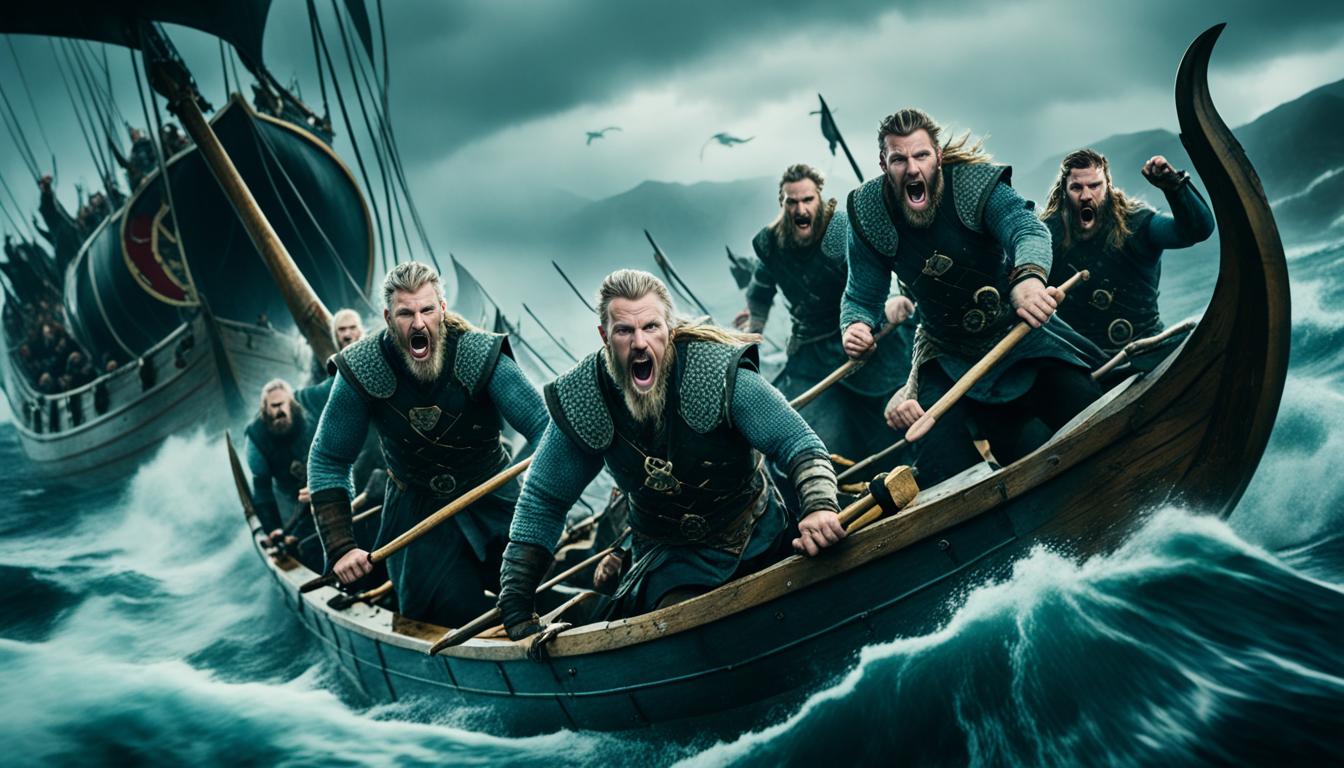The Vikings, not Columbus, were the first Europeans to reach America. Archaeological evidence shows they arrived 500 years earlier. This discovery has changed our view of early Norse settlements in North America.
The Vikings were seafaring warriors from Scandinavia. They explored and settled in various parts of the world. Their journeys to North America were long forgotten until recent findings.
In 1960, Norwegian explorers made a groundbreaking discovery. Helge and Anne Stine Ingstad found Viking remains in Newfoundland, Canada. The site, L’Anse aux Meadows, dates back to 1000 AD.
This find proved Vikings explored America before Columbus. It also supported Norse sagas about Vinland, a grape-growing land. These stories suggest Vikings traveled further south during their expeditions.
Key Takeaways
- Vikings reached North America around 500 years before Christopher Columbus
- Archaeological evidence of a Viking settlement was found at L’Anse aux Meadows, Newfoundland
- The Viking encampment dates back to approximately 1000 AD
- Norse sagas mentioned Vinland, suggesting Vikings explored further south
- The discovery reshaped our understanding of Pre-Columbus Viking presence in America
Evidence of Viking Presence in North America
Vikings settled in North America around 1000 AD. L’Anse aux Meadows in Newfoundland, Canada, offers archaeological evidence of Norse settlements. This discovery reveals Viking exploration centuries before Christopher Columbus arrived.
Modern dating methods have improved our knowledge of Viking history. Radiocarbon dating and tree ring analysis pinpoint the Vikings’ presence in 1021 AD. Cut marks on wood samples confirm their occupation at L’Anse aux Meadows.

The site contains native Canadian wood species like hemlock and jack pine. These were likely sourced from New England, Nova Scotia, Quebec, and Ontario. This suggests Vikings had trading routes between Greenland and North America.
Viking presence in North America challenges traditional historical narratives. It expands our understanding of early European contact with the Americas. This discovery reshapes our view of exploration and cultural exchange.
L’Anse aux Meadows provides solid proof of Vikings in North America. Advanced dating and material analysis support this claim. These findings highlight the Norse’s important role in early American history.
Norse Sagas and Historical Accounts
Norse sagas document Viking presence in North America. The Grænlendinga saga and Eiríks saga rauða detail Viking journeys to Vinland. Scholars believe Vinland was in present-day Newfoundland, Canada.
Norse explorer Bjarni Herjólfsson first sighted mainland North America around 985 AD. His ship was blown off course while heading to Greenland. Bjarni didn’t land but returned to Greenland to share his discovery.
Leif Eriksson led an expedition around 1000 AD, inspired by Bjarni’s discovery. Leif’s crew found Helluland (“Land of Flat Rocks”) and Vinland (“Land of Wine”). They set up a small settlement in Vinland for the winter.
Later expeditions were led by Leif’s brothers and Thorfinn Karlsefni, an Icelandic trader. Thorfinn and his wife Gudrid stayed in Vinland for three years. They traded with indigenous people, whom they called Skraelings.
Conflicts arose between Norse settlers and Skraelings. This led to the abandonment of the Vinland settlement. These sagas provide insights into Viking journeys to North America.
The sagas were passed down orally before being written. They highlight Norse history and seafaring skills. While some details may be embellished, the core story remains significant.
Significance of the Viking Presence in North America
Vikings explored and settled in North America before Christopher Columbus. This discovery changes our view of pre-Columbian trans-Atlantic contact and North American history. It reveals the far-reaching influence of Norse explorers in the medieval North Atlantic world.
Viking presence in North America shows early exchanges between Old and New Worlds. Resources, knowledge, and possibly genetic information were shared centuries before Columbus arrived. This early contact likely shaped North American history and culture significantly.
The cultural exchange from Viking voyages marks a pivotal moment in history. It highlights the intricate connections that existed in the medieval world. These interactions invite further research into their long-term effects.
Norse settlements in North America raise questions about other early explorations. There may be undiscovered sites or evidence of pre-Columbian trans-Atlantic contact. This opens up new paths for interdisciplinary research on Viking exploration in the New World.

Leave a Reply